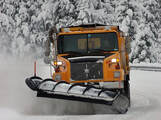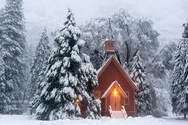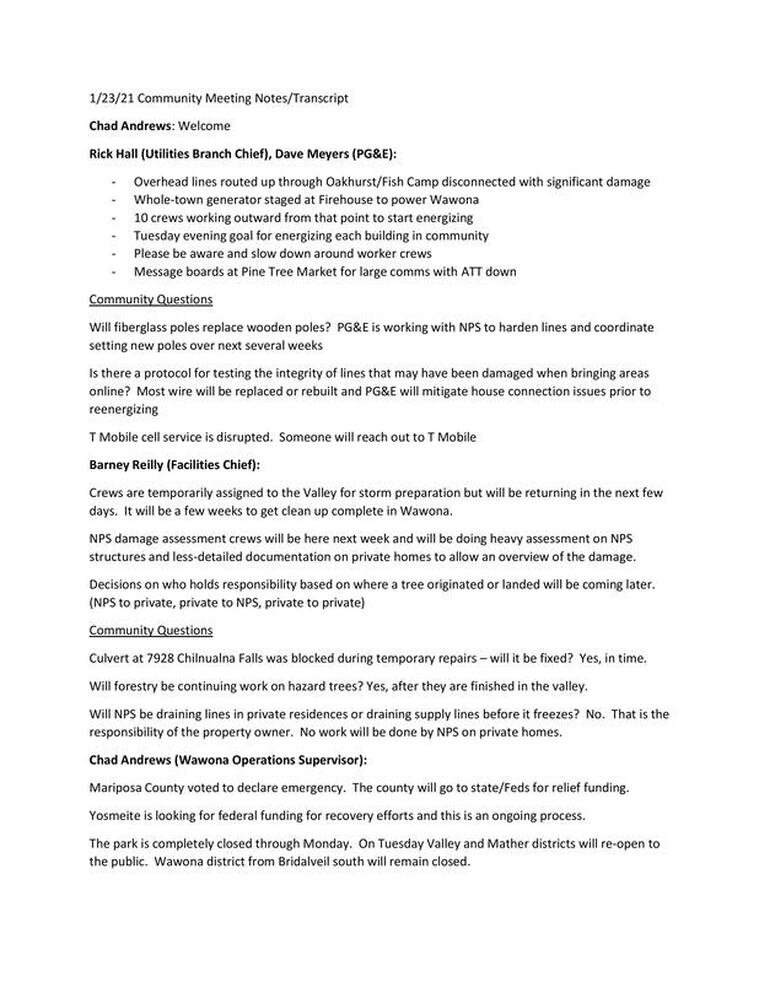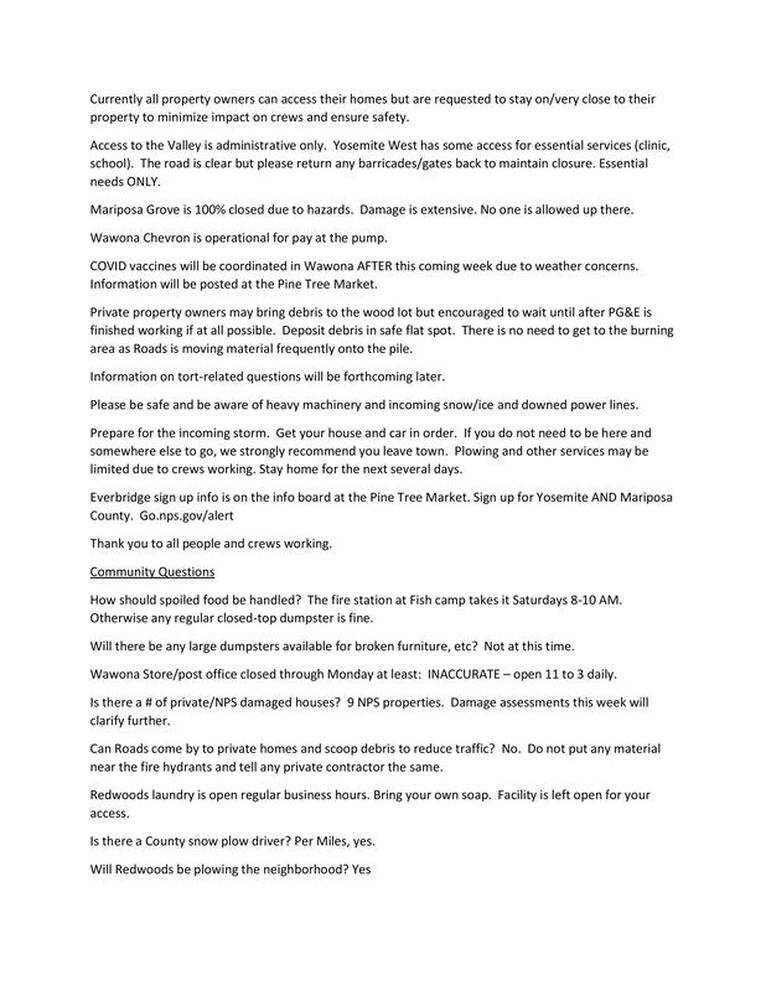WawonaNews.com - February 2021
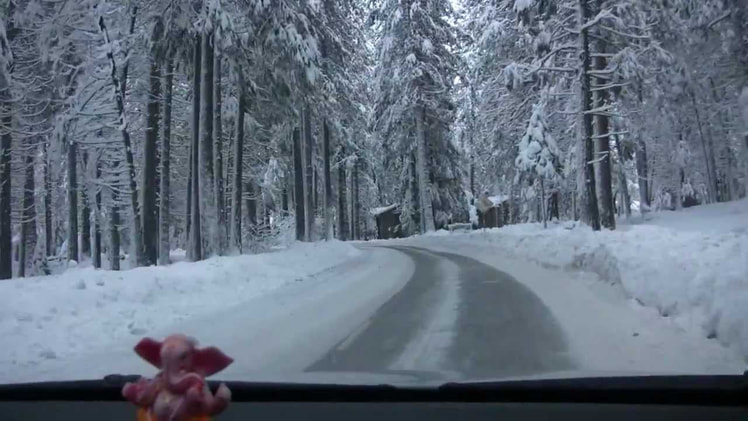
Update on Yosemite Roads - Feb. 2
Wawona Road (continuation of Highway 41) from Yosemite West to South Entrance is open ONLY to the following:
-Residents of the community of Wawona (Section 35) as defined below
-Residents of the community of Yosemite West as defined below
-Contractors hired by residents of Wawona or Yosemite West who possess documentation showing that they have been retained to provide a service at a private residence within either one of those communities
-Utility providers and their subcontractors
-Delivery services to include, but not limited to, USPS, UPS, FedEx, and OnTrac
-Authorized employees as defined below
-Anyone who possesses written authorization from the Yosemite National Park Superintendent
Residents are defined as 1) employees who have been assigned a government or concessioner housing unit within Yosemite National Park by an organization that is authorized to do so and 2) owners or long-term (28 days or greater) renters of houses in Wawona or Yosemite West.
Authorized employees are individuals who are actively engaged in work directed by a supervisor or management official of the NPS, authorized NPS concessioner, or partner who have operations based in Wawona or Yosemite West.
Short term renters (less than 28 days) of private homes within Yosemite West are specifically prohibited from entering these closed areas and must access Yosemite West via Yosemite Valley.
Wawona Road between Yosemite West and Yosemite Valley is open.
Other closed roads:
-Badger Pass Road
-Big Oak Flat Road between Foresta and Big Oak Flat Entrance
-Hetch Hetchy Road
-Tioga Road and Glacier Point Road beyond Badger Pass
Call 209/372-0200 (then 1, 1) for updated road information.
Wawona Road (continuation of Highway 41) from Yosemite West to South Entrance is open ONLY to the following:
-Residents of the community of Wawona (Section 35) as defined below
-Residents of the community of Yosemite West as defined below
-Contractors hired by residents of Wawona or Yosemite West who possess documentation showing that they have been retained to provide a service at a private residence within either one of those communities
-Utility providers and their subcontractors
-Delivery services to include, but not limited to, USPS, UPS, FedEx, and OnTrac
-Authorized employees as defined below
-Anyone who possesses written authorization from the Yosemite National Park Superintendent
Residents are defined as 1) employees who have been assigned a government or concessioner housing unit within Yosemite National Park by an organization that is authorized to do so and 2) owners or long-term (28 days or greater) renters of houses in Wawona or Yosemite West.
Authorized employees are individuals who are actively engaged in work directed by a supervisor or management official of the NPS, authorized NPS concessioner, or partner who have operations based in Wawona or Yosemite West.
Short term renters (less than 28 days) of private homes within Yosemite West are specifically prohibited from entering these closed areas and must access Yosemite West via Yosemite Valley.
Wawona Road between Yosemite West and Yosemite Valley is open.
Other closed roads:
-Badger Pass Road
-Big Oak Flat Road between Foresta and Big Oak Flat Entrance
-Hetch Hetchy Road
-Tioga Road and Glacier Point Road beyond Badger Pass
Call 209/372-0200 (then 1, 1) for updated road information.

PG&E Work Status
Residents needing information regarding access to their property in relation to where PG&E is working and/or blocking access, please call:
1-800-PGE-5000
1-800-743-5000
Per PG&E, this is the best, most efficient route to acquire information.
Chad Andrews
Supervisory U.S. Park Ranger
Yosemite National Park
(W) 209-375-9520
(C) 209-742-8269
Residents needing information regarding access to their property in relation to where PG&E is working and/or blocking access, please call:
1-800-PGE-5000
1-800-743-5000
Per PG&E, this is the best, most efficient route to acquire information.
Chad Andrews
Supervisory U.S. Park Ranger
Yosemite National Park
(W) 209-375-9520
(C) 209-742-8269
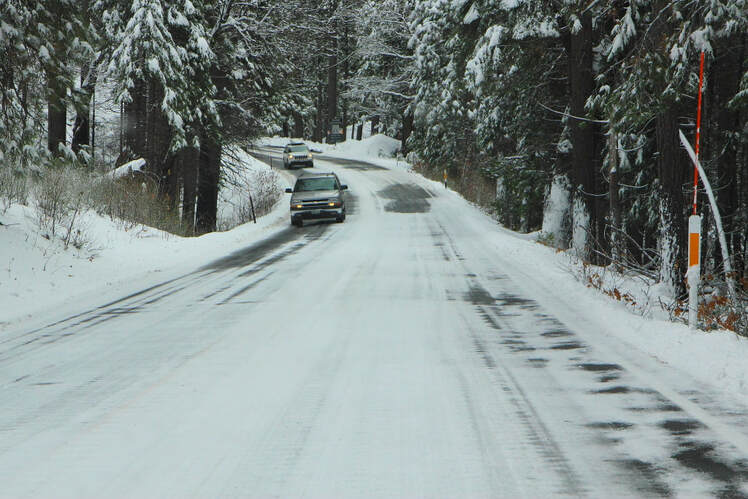
Highway 140 Has Reopened
-Feb 1
Yosemite National Park will reopen on Monday, February 1, 2021. The only access to the park will be via Highway 140.
Big Oak Flat Road (Highway 120 from the west) is anticipated to remain closed for several days due to hazardous road conditions.
Wawona Road (Highway 41) is closed until further notice. (Visitors will be able to access Yosemite West using Wawona Road from Yosemite Valley, but not from the south; tire chains are required.)
Hetch Hetchy Road will also be open.
Yosemite National Park has been closed since January 19 due to a series of winter storms. Strong winds and heavy, wet snow have caused trees and other hazards to impact park roads, trails, and other facilities. Park road crews have been working hard to mitigate hazards and restore safe conditions for park visitors.
Tire chains may be required at any time, even for those with four-wheel drive vehicles (https://go.nps.gov/chains). Temporary road closures possible at any time due to road and weather conditions.
For updated 24-hour road and weather conditions for Yosemite National Park, please call 209-372-0200 (then 1).
For information on public transportation to Yosemite National Park and current bus schedules, please visit the website for the Yosemite Area Regional Transportation System (YARTS) at www.yarts.com.
-Feb 1
Yosemite National Park will reopen on Monday, February 1, 2021. The only access to the park will be via Highway 140.
Big Oak Flat Road (Highway 120 from the west) is anticipated to remain closed for several days due to hazardous road conditions.
Wawona Road (Highway 41) is closed until further notice. (Visitors will be able to access Yosemite West using Wawona Road from Yosemite Valley, but not from the south; tire chains are required.)
Hetch Hetchy Road will also be open.
Yosemite National Park has been closed since January 19 due to a series of winter storms. Strong winds and heavy, wet snow have caused trees and other hazards to impact park roads, trails, and other facilities. Park road crews have been working hard to mitigate hazards and restore safe conditions for park visitors.
Tire chains may be required at any time, even for those with four-wheel drive vehicles (https://go.nps.gov/chains). Temporary road closures possible at any time due to road and weather conditions.
For updated 24-hour road and weather conditions for Yosemite National Park, please call 209-372-0200 (then 1).
For information on public transportation to Yosemite National Park and current bus schedules, please visit the website for the Yosemite Area Regional Transportation System (YARTS) at www.yarts.com.
Yosemite ‘firefall’ viewing different this February. Reservations required to enter park
BY CARMEN GEORGE- Fresno Bee
JANUARY 31, 2021
Fewer people in 2021 will get a chance to see Yosemite National Park’s “firefall” phenomenon, when Horsetail Fall is aglow in February with the sunset.
Yosemite announced Friday that reservations will be required to enter the park starting Feb. 8 and will be needed at least through the end of that month. Yosemite remains closed until at least Monday due to wind and snow damage.
The glowing golden orange effect happens mid- to late-February when conditions are right: Enough water in Horsetail Fall and clear skies so the setting sun can illuminate it. The thin, 1,000-foot ephemeral fall over the eastern edge of El Capitan is barely noticed by many visitors to the popular park in California at other times of the year.
Hundreds of people have descended on Yosemite Valley daily in recent years in hopes of catching a glimpse of the firefall. The need to reduce crowds this year – part of Yosemite’s work to reduce the spread of COVID-19 – was a factor in deciding to implement a temporary reservation system for Yosemite.
Yosemite spokesman Scott Gediman said Friday that it was too soon to say whether the firefall phenomenon would happen this year. The park received significant snowfall this week, but it’s been a dry winter overall.
A popular place to see Horsetail Fall is around the El Capitan Picnic Area, between the Camp 4 campground and El Capitan.
Yosemite officials outlined special restrictions in place from noon to 7 p.m., Feb. 13 to Feb. 25 – also noting that 2021 details are subject to change.
During those days, Yosemite officials said only those with disability placards are allowed to drive to the viewing area at El Cap Picnic Area and park in turnouts on the north side of Northside Drive.
Others should park at the Yosemite Falls parking area, just west of Yosemite Valley Lodge, and then walk there (1.5 miles each way). The picnic area has vault toilets, and trash and recycling dumpsters. One of Northside Drive’s two lanes will be closed to vehicles so people can use it to walk. No parking permits are needed.
People can also walk east from El Capitan Meadow. Officials said tree clearings opened up new viewing spots in 2020.
Meyers wrote on his photography website, “The sunset starts out on the west side of the rocks during early February and progressively moves east (from left to right in the photos). If you want to see the falls all lit up in the early ‘Fire Falls’ season, go further east. As the sunset moves east you can move east (towards picnic grounds) to get good shots.”
For older visitors, the firefall can be reminiscent of another grand spectacle of the same name that ended in 1968: The pushing of burning coals over Glacier Point into Yosemite Valley below.
COVID-19 UPDATEPresident Joe Biden signed an executive order last week that requires everyone wear face coverings in federal buildings and on federal land to slow the spread of coronavirus.
Gediman said Friday that Yosemite was still awaiting specific direction about implementation in national parks, but that masks are “highly highly encouraged” for Yosemite visitors now. Yosemite has been working with local, state and federal public health departments.
Yosemite officials haven’t shared the number of coronavirus cases in the park, but COVID-19 has been reported in Yosemite, like most places in California and the U.S.
Much of Yosemite sits in rural Mariposa County, which has reported some of the fewest cases of COVID-19 in the state: 358 total coronavirus cases and five total deaths, as of Friday.
But counties around Yosemite in the central San Joaquin Valley have been some of the hardest hit by the virus, with thousands of COVID-19 cases and more than 2,000 coronavirus deaths. Previously this winter, Yosemite was only open for day-use visitation to help slow the spread of COVID-19. Before that, the park implemented its first day-use reservation system this summer to reduce visitation after closing for a few months.
MORE YOSEMITE PARKING AND DRIVING RESTRICTIONSYosemite detailed a number of parking and driving restrictions in February.
Those without disability placards won’t be allowed to stop, park or unload passengers between Camp 4 and El Capitan Crossover – a short segment connecting Northside and Southside drives near El Capitan. Those rules apply along the crossover, too.
Southside Drive will be open to vehicles, but parking, stopping, or unloading passengers along it is prohibited from the crossover to Swinging Bridge Picnic Area.
“Pedestrians will also be prohibited from traveling on or adjacent to the road in this area,” park officials continued. “From Cathedral Beach Picnic Area to Sentinel Beach Picnic Area, the area between the road and the Merced River (including the river) will also be closed to all entry.”
The restrictions are aimed at protecting the environment and visitors. On Feb. 22, 2019, the park tallied more than 2,000 people that day gathered to see the firefall in areas mostly lacking parking and restrooms. People trampled sensitive vegetation, caused erosion, littered, and exposed themselves to unsafe conditions, officials said.
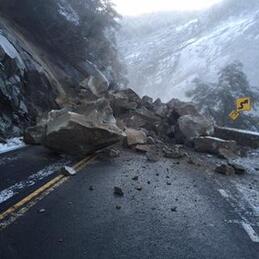 Not actual current rockfall photo. (File from previous rockfall)
Not actual current rockfall photo. (File from previous rockfall)
Rockfall Closes Highway 140 Entrance to Yosemite
Highway 140 is closed near Yosemite Bug due to a rockfall. As long as Highway 140 remains closed, anyone needing to leave the park or El Portal may use Wawona Road (Hwy 41). Administrative traffic and residents may use Wawona Road to get to the park or El Portal. Reminder: the community of Wawona is closed except to Wawona residents. Yosemite National Park remains closed to visitors.
Highway 140 is closed near Yosemite Bug due to a rockfall. As long as Highway 140 remains closed, anyone needing to leave the park or El Portal may use Wawona Road (Hwy 41). Administrative traffic and residents may use Wawona Road to get to the park or El Portal. Reminder: the community of Wawona is closed except to Wawona residents. Yosemite National Park remains closed to visitors.
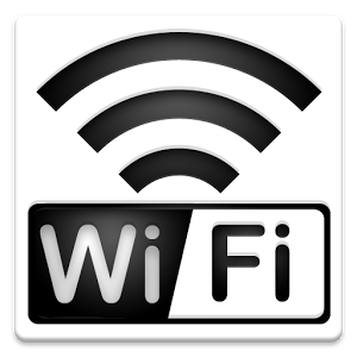
WiFi Access For Wawona Residents At School
Name: Wawona-guest
PW: yosemit3
Name: Wawona-guest
PW: yosemit3
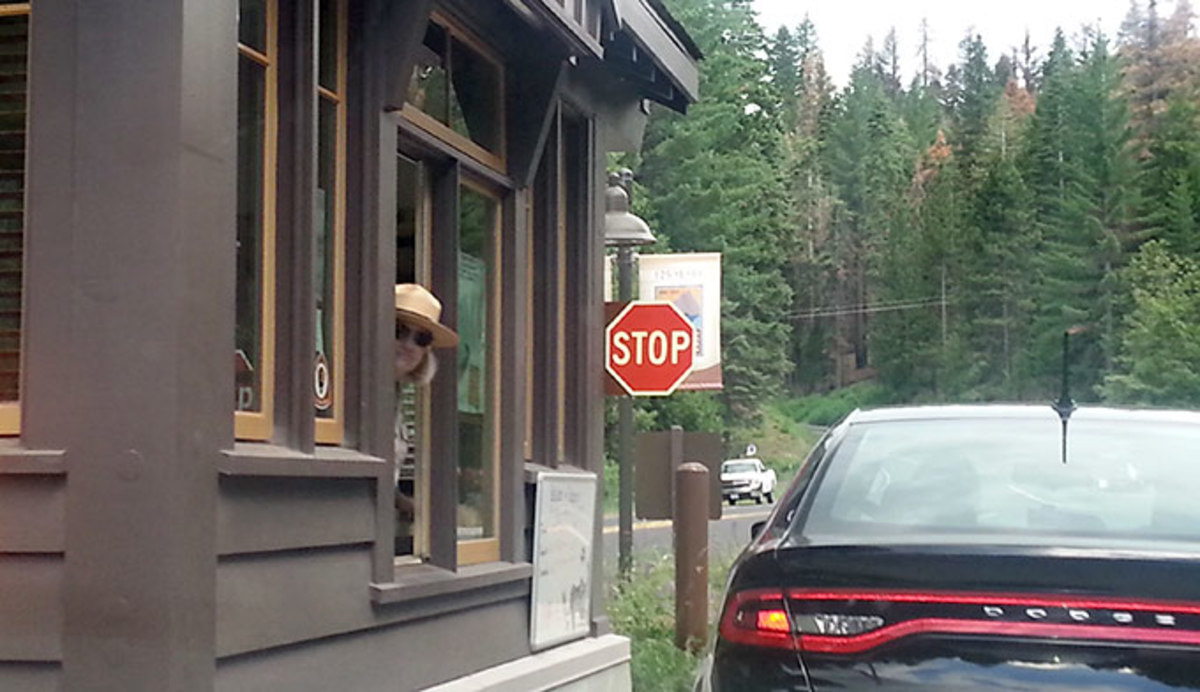
Yosemite Reinstates Day-Use Reservation System to Enter Park Beginning February 1 Reservations Required by February 8
Release Date: January 29, 2021
Contact: [email protected]
[email protected]
Yosemite National Park -- Beginning February 8, visitors to Yosemite National Park will need a day-use reservation to enter the park. The temporary day-use reservation system will allow the park to manage visitation levels to reduce risks associated with exposure to COVID-19.
Day-use reservations will be required for all users, including annual and senior pass holders. Each reservation is valid for seven days and must be validated the first day of the reservation.
Reservations are available on www.recreation.gov beginning at 8 a.m. Monday, Feb. 1. Each day-use reservation is valid for one vehicle and the occupants of that vehicle. For more detailed information, please visit: https://www.nps.gov/yose/planyourvisit/covid19.htm
For visitors staying inside the park, at the Ahwahnee Hotel, Yosemite Valley Lodge or Upper Pines Campground, Scenic Wonders, Redwoods In Yosemite and other lodging within the park day-use reservations are included with overnight lodging reservations. Guests must take a printed copy of their lodging reservation confirmation to show at the park entrance. Because most cellphones are out of range at the park entrances, it is highly advised guests not to rely on their cellphone to show their reservation confirmation.
The reservation system will be in effect until local public health conditions improve.
The health and safety of park visitors, employees, and partners continues to be our number one priority.
For further information on Yosemite National Park, please visit www.nps.gov/yose.
YMCTB is seeking more information about the criteria for removing the reservation system and will send updates as we learn more.
- YMCTB Staff
Release Date: January 29, 2021
Contact: [email protected]
[email protected]
Yosemite National Park -- Beginning February 8, visitors to Yosemite National Park will need a day-use reservation to enter the park. The temporary day-use reservation system will allow the park to manage visitation levels to reduce risks associated with exposure to COVID-19.
Day-use reservations will be required for all users, including annual and senior pass holders. Each reservation is valid for seven days and must be validated the first day of the reservation.
Reservations are available on www.recreation.gov beginning at 8 a.m. Monday, Feb. 1. Each day-use reservation is valid for one vehicle and the occupants of that vehicle. For more detailed information, please visit: https://www.nps.gov/yose/planyourvisit/covid19.htm
For visitors staying inside the park, at the Ahwahnee Hotel, Yosemite Valley Lodge or Upper Pines Campground, Scenic Wonders, Redwoods In Yosemite and other lodging within the park day-use reservations are included with overnight lodging reservations. Guests must take a printed copy of their lodging reservation confirmation to show at the park entrance. Because most cellphones are out of range at the park entrances, it is highly advised guests not to rely on their cellphone to show their reservation confirmation.
The reservation system will be in effect until local public health conditions improve.
The health and safety of park visitors, employees, and partners continues to be our number one priority.
For further information on Yosemite National Park, please visit www.nps.gov/yose.
YMCTB is seeking more information about the criteria for removing the reservation system and will send updates as we learn more.
- YMCTB Staff
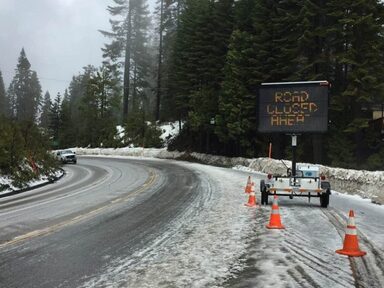
Yosemite Road Closure Update
Yosemite Valley is continuing to experience weakened and downed trees. All non-essential employees and residents are asked to continue to shelter in place until further notice. Be aware of your surroundings, do not linger underneath or in the path of trees or tree limbs, spend as little time outside of buildings as possible, and do not walk on the roads.
The Big Oak Flat Road (Hwy 120 East) and the Wawona Road (Hwy 41) are closed due to snow and hazardous conditions. There is no administrative traffic allowed. For current road conditions, call 209-372-0200 (press 1, then 1 again).
Yosemite Valley is continuing to experience weakened and downed trees. All non-essential employees and residents are asked to continue to shelter in place until further notice. Be aware of your surroundings, do not linger underneath or in the path of trees or tree limbs, spend as little time outside of buildings as possible, and do not walk on the roads.
The Big Oak Flat Road (Hwy 120 East) and the Wawona Road (Hwy 41) are closed due to snow and hazardous conditions. There is no administrative traffic allowed. For current road conditions, call 209-372-0200 (press 1, then 1 again).

Dear Wawona Community,
We had a WAPPOA Board Zoom meeting tonight and discussed contractors available to help with the repairs and clean-up in Wawona. Would like to ask you all to send me (Trish Peterson, [email protected]) the contact info for a contractor(s) you know in the area who might be available to help -roofs, decks, general contracting, electrical, plumbing, clean-up and hauling. I will then contact each contractor to see if it's OK with him/her to send out his/her contact info to you all and to post on the Wawona News. And then I'll send out a complete list. Everyone there is doing such a fantastic job of helping each other out, but we need to help in any way that we can. The power won't be completely restored for more than a week, and rain/snow is forecast until midweek, but after that, contractors could probably get to work.
Hoping we can make a difference!
Huge thanks to all of you who are there and working so hard. Let us know if we can help in any other way!
Trish Peterson
[email protected]
We had a WAPPOA Board Zoom meeting tonight and discussed contractors available to help with the repairs and clean-up in Wawona. Would like to ask you all to send me (Trish Peterson, [email protected]) the contact info for a contractor(s) you know in the area who might be available to help -roofs, decks, general contracting, electrical, plumbing, clean-up and hauling. I will then contact each contractor to see if it's OK with him/her to send out his/her contact info to you all and to post on the Wawona News. And then I'll send out a complete list. Everyone there is doing such a fantastic job of helping each other out, but we need to help in any way that we can. The power won't be completely restored for more than a week, and rain/snow is forecast until midweek, but after that, contractors could probably get to work.
Hoping we can make a difference!
Huge thanks to all of you who are there and working so hard. Let us know if we can help in any other way!
Trish Peterson
[email protected]
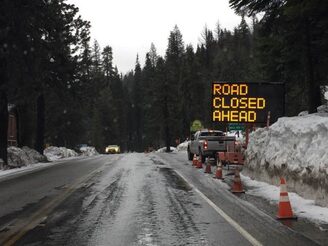
Highway 41 Closed
Jan 28 -The Wawona Road (Highway 41) is closed to all traffic due to snow and hazardous conditions. For current road information, call 209-372-0200 (press 1, then 1 again).
Jan 28 -The Wawona Road (Highway 41) is closed to all traffic due to snow and hazardous conditions. For current road information, call 209-372-0200 (press 1, then 1 again).
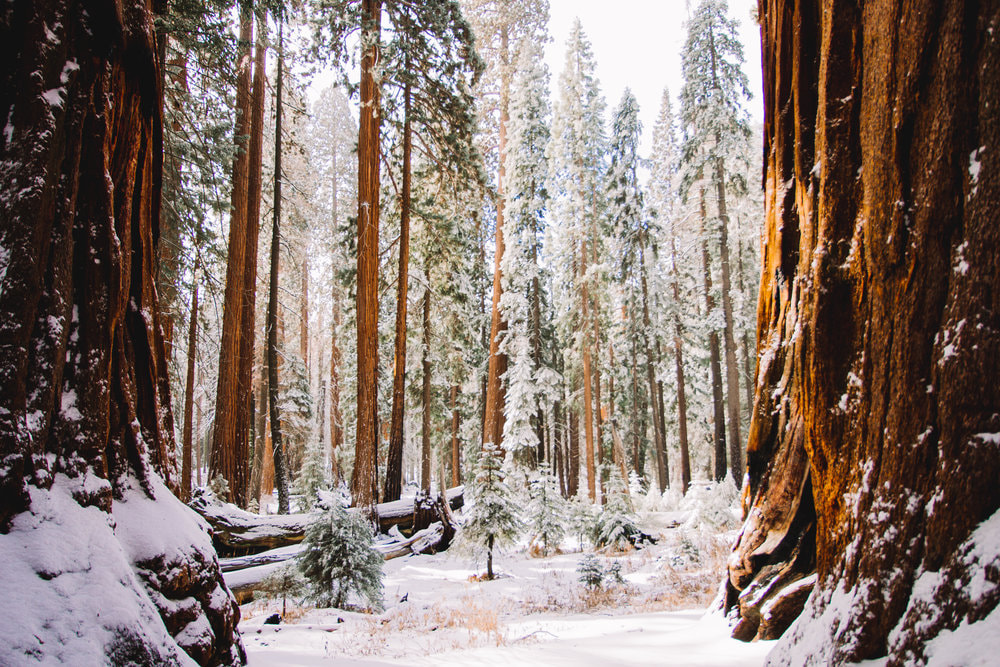
15 Giant Sequoias Blew Over
By CHRISTOPHER REYNOLDS LA TIMES STAFF WRITER
JAN. 28, 2021
First came the wind — gusts Yosemite National Park spokesman Scott Gediman estimated at 80 to 100 mph. Then came the crashing and crunching in the park’s Mariposa Grove of Giant Sequoias. Then rain and snow.
Now, as the toll becomes clearer, Gediman said, the “Mono wind event” that began Jan. 18 has caused perhaps “the most damage” measured in the park’s recorded history, including hundreds of fallen trees and crushed structures.
“We found 15 giant sequoias that were completely toppled by the wind” in the Mariposa Grove of Giant Sequoias in the southern part of the park, Gediman said. “There could be more.”
He said early estimates suggest that the cost of repairs “will be in the ballpark” of the park’s flood of January 1997, in which damage was estimated at “upward of $200 million.”
limits to the public Thursday as rangers assessed the damage and marveled at the lack of storm-related injuries. Downed trees in Yosemite Valley include black oaks, ponderosa pines and incense cedars. There may be many more downed trees along Glacier Point Road, Gediman said. “We have not been up that road yet,” he said.
Electricity was still out in the Wawona area, which includes Mariposa Grove.
Though park officials had hoped to reopen on Saturday, Gediman said, that is now scheduled for Monday — a reflection of many safety risks rangers are dealing with.
“And there’s more damage happening, too,” Gediman said. “We’ve got heavy snow falling and snow accumulations in the trees and that’s causing tree failures... One fell on a ranger’s house in the valley.”
When the park does open Monday, large areas will remain closed, including the southern entrance, Wawona Road (Highway 41), used by most northbound visitors from Southern California.
Gediman said rangers will reopen the park entrances on Big Oak Flat Road (Highway 120), El Portal Road (Highway 140) and Hetch Hetchy Road. Visitors who enter that way will have access to Yosemite Valley.
But those visitors won’t be able to access Tunnel View, Wawona, Badger Pass, Mariposa Grove and some other areas south of Yosemite Valley, he said.
“We are anticipating several weeks” before visitors can enter the park from the south, Gediman said, citing repairs that need to happen first.
These measures come just as park management was responding to Gov. Gavin Newsom’s decision on Monday to loosen COVID restrictions for most of the state. When the park reopens, Gediman said, it will be again be open 24 hours a day, no day-trip advance-reservations required, with reopened lodgings soon to follow.
On Feb. 5, the park’s concessionaires are expected to open the Ahwahnee Hotel and the Yosemite Valley Lodge. On Feb. 8, rangers plan to open the Upper Pines Campground.
Meanwhile, in the southern reaches of the park, rangers and others have much destruction to sort out.
In the Wawona area, falling trees destroyed or damaged 15 to 20 homes, including ranger residences, Gediman said. The fallen giants in the Mariposa Grove of Giant Sequoias, he said, included eight tall trees in the upper grove and seven in the lower grove.
Park pioneer Galen Clark’s Mariposa Cabin, a landmark in the upper grove that goes back more than a century, was undamaged, Gediman said. But elsewhere in the grove, damage included a new bathroom and section of boardwalk that were part of a $40-million restoration project completed in 2018.
As for the timetable for reopening the park’s southern entrance, Gediman said, “We will not be reopening until power is restored.” And even after that, he added, many other safety measures may be necessary before reopening is possible.
By CHRISTOPHER REYNOLDS LA TIMES STAFF WRITER
JAN. 28, 2021
First came the wind — gusts Yosemite National Park spokesman Scott Gediman estimated at 80 to 100 mph. Then came the crashing and crunching in the park’s Mariposa Grove of Giant Sequoias. Then rain and snow.
Now, as the toll becomes clearer, Gediman said, the “Mono wind event” that began Jan. 18 has caused perhaps “the most damage” measured in the park’s recorded history, including hundreds of fallen trees and crushed structures.
“We found 15 giant sequoias that were completely toppled by the wind” in the Mariposa Grove of Giant Sequoias in the southern part of the park, Gediman said. “There could be more.”
He said early estimates suggest that the cost of repairs “will be in the ballpark” of the park’s flood of January 1997, in which damage was estimated at “upward of $200 million.”
limits to the public Thursday as rangers assessed the damage and marveled at the lack of storm-related injuries. Downed trees in Yosemite Valley include black oaks, ponderosa pines and incense cedars. There may be many more downed trees along Glacier Point Road, Gediman said. “We have not been up that road yet,” he said.
Electricity was still out in the Wawona area, which includes Mariposa Grove.
Though park officials had hoped to reopen on Saturday, Gediman said, that is now scheduled for Monday — a reflection of many safety risks rangers are dealing with.
“And there’s more damage happening, too,” Gediman said. “We’ve got heavy snow falling and snow accumulations in the trees and that’s causing tree failures... One fell on a ranger’s house in the valley.”
When the park does open Monday, large areas will remain closed, including the southern entrance, Wawona Road (Highway 41), used by most northbound visitors from Southern California.
Gediman said rangers will reopen the park entrances on Big Oak Flat Road (Highway 120), El Portal Road (Highway 140) and Hetch Hetchy Road. Visitors who enter that way will have access to Yosemite Valley.
But those visitors won’t be able to access Tunnel View, Wawona, Badger Pass, Mariposa Grove and some other areas south of Yosemite Valley, he said.
“We are anticipating several weeks” before visitors can enter the park from the south, Gediman said, citing repairs that need to happen first.
These measures come just as park management was responding to Gov. Gavin Newsom’s decision on Monday to loosen COVID restrictions for most of the state. When the park reopens, Gediman said, it will be again be open 24 hours a day, no day-trip advance-reservations required, with reopened lodgings soon to follow.
On Feb. 5, the park’s concessionaires are expected to open the Ahwahnee Hotel and the Yosemite Valley Lodge. On Feb. 8, rangers plan to open the Upper Pines Campground.
Meanwhile, in the southern reaches of the park, rangers and others have much destruction to sort out.
In the Wawona area, falling trees destroyed or damaged 15 to 20 homes, including ranger residences, Gediman said. The fallen giants in the Mariposa Grove of Giant Sequoias, he said, included eight tall trees in the upper grove and seven in the lower grove.
Park pioneer Galen Clark’s Mariposa Cabin, a landmark in the upper grove that goes back more than a century, was undamaged, Gediman said. But elsewhere in the grove, damage included a new bathroom and section of boardwalk that were part of a $40-million restoration project completed in 2018.
As for the timetable for reopening the park’s southern entrance, Gediman said, “We will not be reopening until power is restored.” And even after that, he added, many other safety measures may be necessary before reopening is possible.
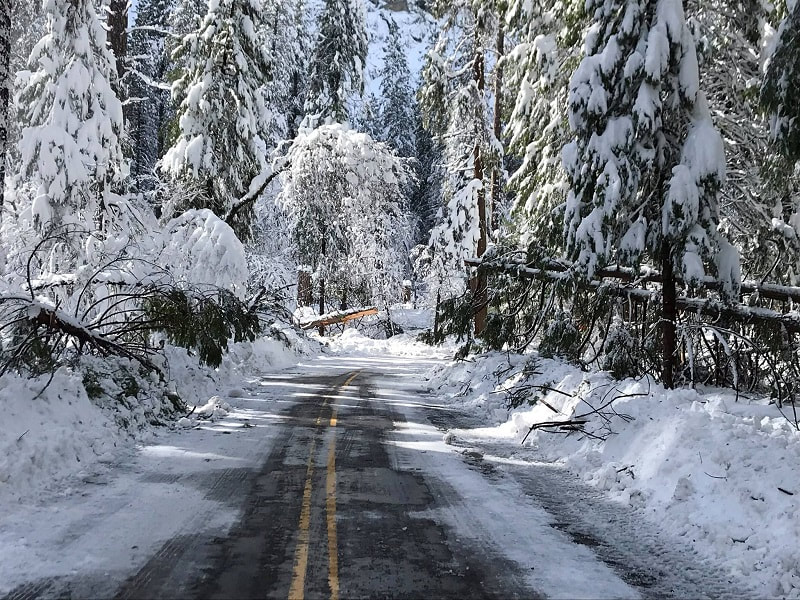
Yosemite to Reopen February 1
Yosemite National Park will remain closed at least until Monday, February 1, 2021, as a result of an ongoing winter storm. Yosemite Valley has already received over 18 inches of snow, and it continues to snow. Heavy, wet snow has caused trees and branches to fall throughout the park, causing damage to park facilities and vehicles. There have been no injuries reported.
Yosemite's road crews continue to do an amazing job to clear park roads and parking areas. However, with ongoing falling snow and tree failures, it is not safe for the park to reopen.
When the park reopens, it will be open 24 hours per day. Upper Pines Campground will open on February 8. Yosemite Valley Lodge and The Ahwahnee will open on February 5.
Visitors will be able to enter the park using El Portal Road (Highway 140), Big Oak Flat Road (Highway 120 from the west), and Hetch Hetchy Road. Areas south of Yosemite Valley (including Badger Pass, Wawona, Mariposa Grove, South Entrance, and Wawona Road) will remain closed until further notice.
Yosemite National Park will remain closed at least until Monday, February 1, 2021, as a result of an ongoing winter storm. Yosemite Valley has already received over 18 inches of snow, and it continues to snow. Heavy, wet snow has caused trees and branches to fall throughout the park, causing damage to park facilities and vehicles. There have been no injuries reported.
Yosemite's road crews continue to do an amazing job to clear park roads and parking areas. However, with ongoing falling snow and tree failures, it is not safe for the park to reopen.
When the park reopens, it will be open 24 hours per day. Upper Pines Campground will open on February 8. Yosemite Valley Lodge and The Ahwahnee will open on February 5.
Visitors will be able to enter the park using El Portal Road (Highway 140), Big Oak Flat Road (Highway 120 from the west), and Hetch Hetchy Road. Areas south of Yosemite Valley (including Badger Pass, Wawona, Mariposa Grove, South Entrance, and Wawona Road) will remain closed until further notice.
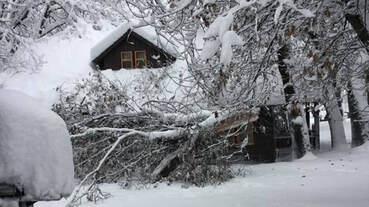
Caution: Trees Still Falling in Wawona
Jan. 28 - NPS
Yosemite Valley situational awareness update: Yosemite is continuing to experience weakened and downed trees. School and administrative functions may continue, all other employees and residents are asked to “shelter in place” until further notice. If you must travel in Yosemite Valley please be aware of your surroundings, do not linger underneath or in the path of trees or tree limbs, and spend as little time outside of buildings as possible.
Jan. 28 - Christian Mueller - Redwoods in Yosemite manager - I would advise all homeowners not to come up to Wawona at the moment as the situation is hazardous and similar to Yosemite Valley. Also, Mariposa County has trouble plowing the roads, and we still have trees falling and the electricity is not restored yet. Our employees cannot use vehicles until the county plows the roads. I have received many messages from homeowners to check on the cabins. Unfortunately, this is not possible and safe at the moment.
Thank you for your understanding.
Best regards,
Christian Mueller
Jan. 28 - NPS
Yosemite Valley situational awareness update: Yosemite is continuing to experience weakened and downed trees. School and administrative functions may continue, all other employees and residents are asked to “shelter in place” until further notice. If you must travel in Yosemite Valley please be aware of your surroundings, do not linger underneath or in the path of trees or tree limbs, and spend as little time outside of buildings as possible.
Jan. 28 - Christian Mueller - Redwoods in Yosemite manager - I would advise all homeowners not to come up to Wawona at the moment as the situation is hazardous and similar to Yosemite Valley. Also, Mariposa County has trouble plowing the roads, and we still have trees falling and the electricity is not restored yet. Our employees cannot use vehicles until the county plows the roads. I have received many messages from homeowners to check on the cabins. Unfortunately, this is not possible and safe at the moment.
Thank you for your understanding.
Best regards,
Christian Mueller
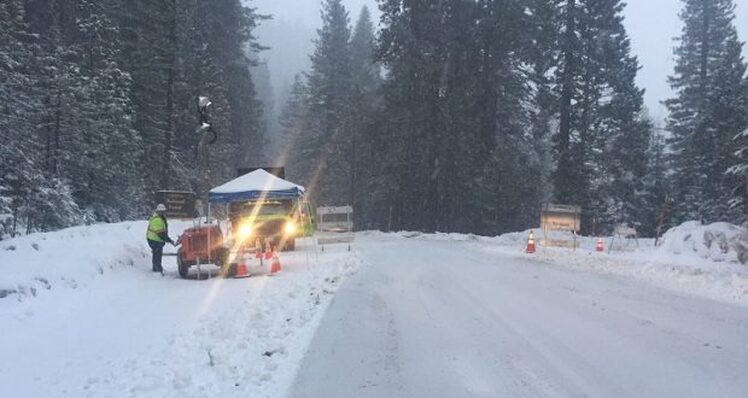
Update on Hwy 41 Route to Wawona
Yosemite National Park will remain closed at least until Saturday, January 30, 2021, conditions permitting. Park staff continue to clear roads and trails, mitigate hazard trees, and work toward restoring safe conditions for employees and visitors due to last week's Mono wind event. Hazardous conditions, including substantial snow accumulation, falling trees, and dangerous road conditions, are anticipated through the week.
When the park reopens, it will be open 24 hours per day. Upper Pines Campground will open on February 8. Yosemite Valley Lodge and The Ahwahnee will open on February 5. Visitors will be able to enter the park using El Portal Road (Highway 140), Big Oak Flat Road (Highway 120 from the west), and Hetch Hetchy Road. Areas south of Yosemite Valley (including Badger Pass, Wawona, Mariposa Grove, South Entrance, and Wawona Road) will remain closed until further notice.
To reiterate, the closure of Highway 41 from the South Entrance to Bridalveil Fall means that visitors will only be able to access the Park through Highway 140, Highway 120, and Hetch Hetchy Road until conditions improve.
YMCTB will continue to monitor the information from the Park and will send an update as the situation changes.
- YMCTB Staff
Yosemite National Park will remain closed at least until Saturday, January 30, 2021, conditions permitting. Park staff continue to clear roads and trails, mitigate hazard trees, and work toward restoring safe conditions for employees and visitors due to last week's Mono wind event. Hazardous conditions, including substantial snow accumulation, falling trees, and dangerous road conditions, are anticipated through the week.
When the park reopens, it will be open 24 hours per day. Upper Pines Campground will open on February 8. Yosemite Valley Lodge and The Ahwahnee will open on February 5. Visitors will be able to enter the park using El Portal Road (Highway 140), Big Oak Flat Road (Highway 120 from the west), and Hetch Hetchy Road. Areas south of Yosemite Valley (including Badger Pass, Wawona, Mariposa Grove, South Entrance, and Wawona Road) will remain closed until further notice.
To reiterate, the closure of Highway 41 from the South Entrance to Bridalveil Fall means that visitors will only be able to access the Park through Highway 140, Highway 120, and Hetch Hetchy Road until conditions improve.
YMCTB will continue to monitor the information from the Park and will send an update as the situation changes.
- YMCTB Staff
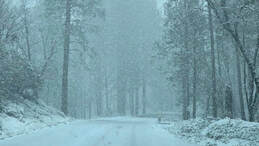
Message From Yosemite National Park
Jan. 26 - The National Weather Service forecast still calls for heavy snow, rain, and winds tonight through Friday, with heaviest rain/snow Wednesday and Thursday. Snow level will start around 2,500 feet and rise to about 5,000 ft. Expect several inches of rain in the foothills, a few feet of snow around 4,000 feet, and several feet of snow at the higher elevations. The combination of snow and high winds may result in falling trees/limbs and power outages. Be prepared for road closures. If you must travel, have food and water and plenty of warm clothing with you. Carry tire chains. Call 209/372-0200 (then 1, 1) for road status.
Jan. 26 - The National Weather Service forecast still calls for heavy snow, rain, and winds tonight through Friday, with heaviest rain/snow Wednesday and Thursday. Snow level will start around 2,500 feet and rise to about 5,000 ft. Expect several inches of rain in the foothills, a few feet of snow around 4,000 feet, and several feet of snow at the higher elevations. The combination of snow and high winds may result in falling trees/limbs and power outages. Be prepared for road closures. If you must travel, have food and water and plenty of warm clothing with you. Carry tire chains. Call 209/372-0200 (then 1, 1) for road status.

PG&E Update on Mono Wind Event and Preparations for Upcoming Severe Weather
Posted by: SNO Staff January 26
Wind event update – PG&E crews continue to work on repairing damage from last weeks mono wind event. In some areas, they are essentially having to rebuild the infrastructure from scratch, particularly near Wawona and Fish Camp.
Currently about 800 customers remain out of power. PG&E brought in temporary generation to restore many customers, and may install more in the coming days, weather permitting.
For more than 300 of those customers, are being informed today that they may be out of power until February 3 due to the amount of damage and the extremely challenging conditions.
Much of the damaged equipment was mounted on trees that were toppled or damaged by the winds. PG&E is working with the National Park as well as cultural observers as they plan the most appropriate way to rebuild the infrastructure.
One note, PG&E is proud of the fact that in the Mariposa area they are using local restaurants to feed the more than 100 crewmembers who have been brought in to assist with repairs. PG&E understands that the pandemic has hit many industries, and appreciate the help of these restaurants to keep the crews fed.
Winter Storm – PG&E meteorologists are forecasting a major winter storm to impact much of PG&E’s service area starting later today through Friday.
Significant impacts are expected across PG&E’s service territory due to gusty winds, low snow and prolonged periods of moderate to heavy rain, which has led the National Weather Service to issue multiple watches and warnings across California.
The front will slowly progress into the south half of the territory overnight through Wednesday morning then stall and pivot over the South during the day Wednesday, where it will remain through Thursday.
Which means this storm has the potential to produce customer outages. Such weather-related outages are NOT Public Safety Power Shutoffs.
PG&E has a plan to respond to potential outages, based on our Storm Outage Prediction Model, which includes staffing crews in these locations to respond to outages safely and as quickly as possible.
PG&E encourages their customers to have a plan as well. Follow this link for assistance with creating a plan: https://www.pge.com/en_US/safety/emergency-preparedness/emergency-preparedness.page
Based on forecasts of flooding in areas recently impacted by fires, PG&E is warning customers of possible landslides as debris flows are triggered during periods of heavy rain fall.
Slurries of soil, rock and trees could rapidly slide in hillside swales and tributary stream gullies, with potential to run out past the base of slopes.
PG&E’s Geosciences team is performing debris flow modeling analysis of recent wildfire locations and has also deployed Specialists to Central Coast and Yosemite Divisions to perform a pre-assessment and provided recommendations for restoration teams in the field on the potential risk for those areas.
The Geosciences team monitors developing weather forecasts and measured rainfall to provide updates on hazard and decisions for making “Watch” or “Warning” notifications.
“We want our customers to be prepared for possible landslides and stay informed for local agency and National Weather Service/NOAA/CALFIRE notifications and evacuation messages.”
If you suspect imminent danger, evacuate the area immediately.
Posted by: SNO Staff January 26
Wind event update – PG&E crews continue to work on repairing damage from last weeks mono wind event. In some areas, they are essentially having to rebuild the infrastructure from scratch, particularly near Wawona and Fish Camp.
Currently about 800 customers remain out of power. PG&E brought in temporary generation to restore many customers, and may install more in the coming days, weather permitting.
For more than 300 of those customers, are being informed today that they may be out of power until February 3 due to the amount of damage and the extremely challenging conditions.
Much of the damaged equipment was mounted on trees that were toppled or damaged by the winds. PG&E is working with the National Park as well as cultural observers as they plan the most appropriate way to rebuild the infrastructure.
One note, PG&E is proud of the fact that in the Mariposa area they are using local restaurants to feed the more than 100 crewmembers who have been brought in to assist with repairs. PG&E understands that the pandemic has hit many industries, and appreciate the help of these restaurants to keep the crews fed.
Winter Storm – PG&E meteorologists are forecasting a major winter storm to impact much of PG&E’s service area starting later today through Friday.
Significant impacts are expected across PG&E’s service territory due to gusty winds, low snow and prolonged periods of moderate to heavy rain, which has led the National Weather Service to issue multiple watches and warnings across California.
The front will slowly progress into the south half of the territory overnight through Wednesday morning then stall and pivot over the South during the day Wednesday, where it will remain through Thursday.
Which means this storm has the potential to produce customer outages. Such weather-related outages are NOT Public Safety Power Shutoffs.
PG&E has a plan to respond to potential outages, based on our Storm Outage Prediction Model, which includes staffing crews in these locations to respond to outages safely and as quickly as possible.
PG&E encourages their customers to have a plan as well. Follow this link for assistance with creating a plan: https://www.pge.com/en_US/safety/emergency-preparedness/emergency-preparedness.page
Based on forecasts of flooding in areas recently impacted by fires, PG&E is warning customers of possible landslides as debris flows are triggered during periods of heavy rain fall.
Slurries of soil, rock and trees could rapidly slide in hillside swales and tributary stream gullies, with potential to run out past the base of slopes.
PG&E’s Geosciences team is performing debris flow modeling analysis of recent wildfire locations and has also deployed Specialists to Central Coast and Yosemite Divisions to perform a pre-assessment and provided recommendations for restoration teams in the field on the potential risk for those areas.
The Geosciences team monitors developing weather forecasts and measured rainfall to provide updates on hazard and decisions for making “Watch” or “Warning” notifications.
“We want our customers to be prepared for possible landslides and stay informed for local agency and National Weather Service/NOAA/CALFIRE notifications and evacuation messages.”
If you suspect imminent danger, evacuate the area immediately.

AT&T Bill Adjustments
Due to the recent storm, if your AT&T service is down, let AT&T know and you won’t be billed from January 19. Call 1-800-288-2020. After your next statement arrives, call and your bill will be adjusted.
Due to the recent storm, if your AT&T service is down, let AT&T know and you won’t be billed from January 19. Call 1-800-288-2020. After your next statement arrives, call and your bill will be adjusted.
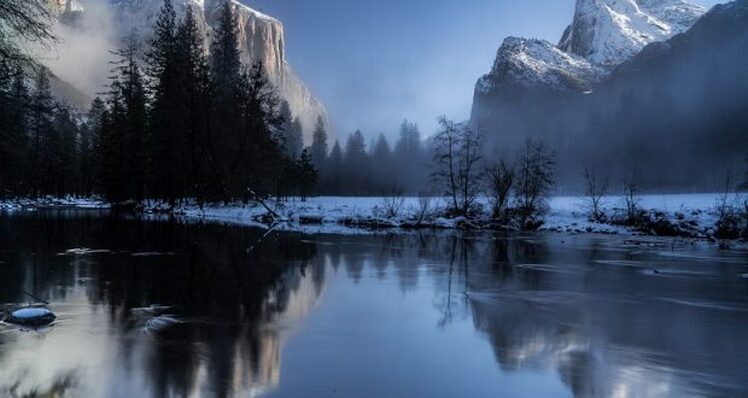
Yosemite National Park Weather Alert
Posted by: SNO Staff January 25
YOSEMITE – Yosemite National Park and the National Weather Service is forecasting heavy snow, rain, and winds starting late afternoon Tuesday, with heaviest rain/snow Wednesday and Thursday. Snow level will start around 2,000 feet and rise to about 5,000 ft. Up to 10-12 feet of snow is possible at the higher elevations.
Please be advised of the current and upcoming conditions and prepare accordingly.
The combination of snow and high winds may result in falling trees/limbs and power outages. Be prepared for road closures. If you must travel, have food and water and plenty of warm clothing with you. Carry tire chains.
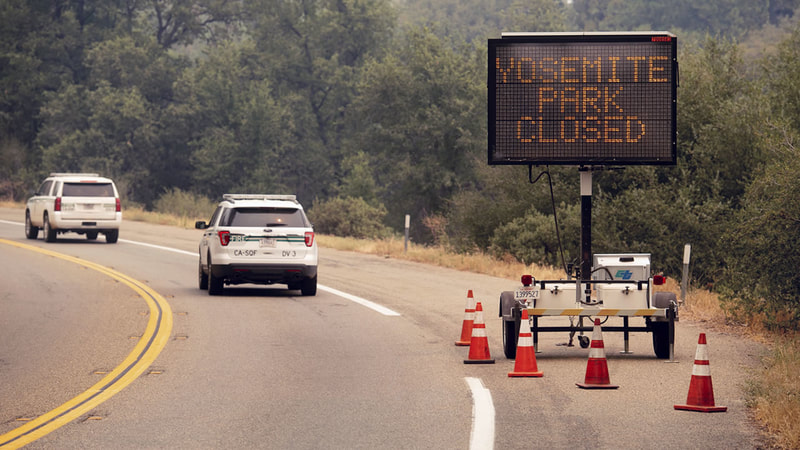
Park to Remain Closed Until January 30
Yosemite National Park will remain closed at least until Saturday, January 30, 2021, conditions permitting. Park staff continue to clear roads and trails, mitigate hazard trees, and work toward restoring safe conditions for employees and visitors due to last week's Mono wind event. A significant winter storm is forecast to begin Tuesday night. Hazardous conditions, including substantial snow accumulation, falling trees, and dangerous road conditions, are anticipated through the week.
When the park reopens, it will be open 24 hours per day. Upper Pines Campground will open on February 8. Yosemite Valley Lodge and The Ahwahnee will open on February 5. Visitors will be able to enter the park using El Portal Road (Highway 140), Big Oak Flat Road (Highway 120 from the west), and Hetch Hetchy Road. Areas south of Yosemite Valley (including Badger Pass, Wawona, Mariposa Grove, South Entrance, and Wawona Road) will remain closed until further notice.
Yosemite National Park will remain closed at least until Saturday, January 30, 2021, conditions permitting. Park staff continue to clear roads and trails, mitigate hazard trees, and work toward restoring safe conditions for employees and visitors due to last week's Mono wind event. A significant winter storm is forecast to begin Tuesday night. Hazardous conditions, including substantial snow accumulation, falling trees, and dangerous road conditions, are anticipated through the week.
When the park reopens, it will be open 24 hours per day. Upper Pines Campground will open on February 8. Yosemite Valley Lodge and The Ahwahnee will open on February 5. Visitors will be able to enter the park using El Portal Road (Highway 140), Big Oak Flat Road (Highway 120 from the west), and Hetch Hetchy Road. Areas south of Yosemite Valley (including Badger Pass, Wawona, Mariposa Grove, South Entrance, and Wawona Road) will remain closed until further notice.
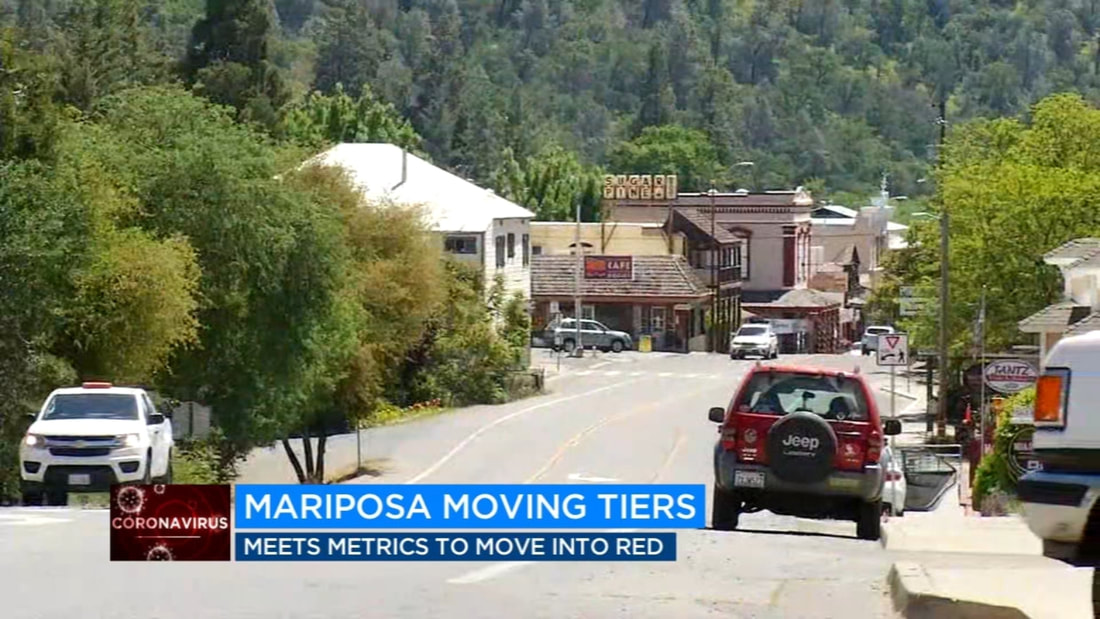
The Regional Stay Home Order has officially been lifted. With the lifting of this Order, Mariposa County falls into the Red Tier.
What does this mean?
As case rates have decreased after the holidays, so has the demand for ICU beds and other healthcare services. The 4-week projections show that regional ICU availability will be above the 15% threshold by February 7th, however current ICU availability in the San Joaquin Valley remains close to zero.
In order to prevent future surge and to keep our friends, families, and community safe and healthy, we must all remain vigilant. Please continue to wear your masks, wash your hands, practice social distancing, avoid gatherings, and follow guidance laid out in the Blueprint for a Safer Economy.
With the lifting of this order, Mariposa County falls back into the Red Tier in the Blueprint for a Safer Economy. You can review what that means by visiting www.mariposacounty.org/2484/Blueprint-for-a-Safer-Economy. We have also included a breakdown of sectors below.
If you would like to learn more about the lifting of the Regional Stay Home Order, you can view the press release here: www.cdph.ca.gov/Programs/OPA/Pages/NR21-030.aspx
As always, our team is here to help answer any questions you may have: 209-259-1332 or [email protected].
Reminder – ALL Sectors have modifications in each tier that they MUST follow.
Bars and Breweries (where no food is served):
Red Tier – Closed
Fitness Centers:
Red Tier – Open indoors at 10% capacity
Hotels and Lodging:
Red Tier – Single occupancy units required to have a 24-hour rest period*, Multiple-unit facilities must have either a 24-hour rest period or 70% occupancy over a 7-day period (Monday-Sunday)*, fitness centers open at 10% capacity, indoor pools and spas must close
*Hotels, Lodging, and Short-Term Rentals have a local Health Officer Order that must be followed in addition to state guidance. (NOTE: Unofficially, vacation rentals in Wawona will need to wait an additional 2 weeks until repairs and cleanup is completed around town.)
Museums:
Red Tier – Open indoors with 25% capacity
Offices:
Red Tier – Remote
Personal Care Services:
Red Tier – Open indoors with modifications
Places of Worship:
Red Tier – Open indoors at 25% capacity or 100 people, whichever is fewer
Restaurants and Bars that serve food:
Red Tier – Open indoors at 25% capacity or 100 people, whichever is fewer
Retail Sectors:
Red Tier – Open indoors at 50% capacity
Wineries:
Red Tier – Open outdoors only
We have additional business resources and information on our COVID-19 webpage.
As mentioned above, our team is here to help. Please do not hesitate to reach out for questions or clarifications.
Kind regards,
Mariposa County COVID-19 Information Team
For questions or comments, the phone number for Mariposa County is (209) 966-2000.
- Yosemite Mariposa County Tourism Bureau Staff
What does this mean?
As case rates have decreased after the holidays, so has the demand for ICU beds and other healthcare services. The 4-week projections show that regional ICU availability will be above the 15% threshold by February 7th, however current ICU availability in the San Joaquin Valley remains close to zero.
In order to prevent future surge and to keep our friends, families, and community safe and healthy, we must all remain vigilant. Please continue to wear your masks, wash your hands, practice social distancing, avoid gatherings, and follow guidance laid out in the Blueprint for a Safer Economy.
With the lifting of this order, Mariposa County falls back into the Red Tier in the Blueprint for a Safer Economy. You can review what that means by visiting www.mariposacounty.org/2484/Blueprint-for-a-Safer-Economy. We have also included a breakdown of sectors below.
If you would like to learn more about the lifting of the Regional Stay Home Order, you can view the press release here: www.cdph.ca.gov/Programs/OPA/Pages/NR21-030.aspx
As always, our team is here to help answer any questions you may have: 209-259-1332 or [email protected].
Reminder – ALL Sectors have modifications in each tier that they MUST follow.
Bars and Breweries (where no food is served):
Red Tier – Closed
Fitness Centers:
Red Tier – Open indoors at 10% capacity
Hotels and Lodging:
Red Tier – Single occupancy units required to have a 24-hour rest period*, Multiple-unit facilities must have either a 24-hour rest period or 70% occupancy over a 7-day period (Monday-Sunday)*, fitness centers open at 10% capacity, indoor pools and spas must close
*Hotels, Lodging, and Short-Term Rentals have a local Health Officer Order that must be followed in addition to state guidance. (NOTE: Unofficially, vacation rentals in Wawona will need to wait an additional 2 weeks until repairs and cleanup is completed around town.)
Museums:
Red Tier – Open indoors with 25% capacity
Offices:
Red Tier – Remote
Personal Care Services:
Red Tier – Open indoors with modifications
Places of Worship:
Red Tier – Open indoors at 25% capacity or 100 people, whichever is fewer
Restaurants and Bars that serve food:
Red Tier – Open indoors at 25% capacity or 100 people, whichever is fewer
Retail Sectors:
Red Tier – Open indoors at 50% capacity
Wineries:
Red Tier – Open outdoors only
We have additional business resources and information on our COVID-19 webpage.
As mentioned above, our team is here to help. Please do not hesitate to reach out for questions or clarifications.
Kind regards,
Mariposa County COVID-19 Information Team
For questions or comments, the phone number for Mariposa County is (209) 966-2000.
- Yosemite Mariposa County Tourism Bureau Staff
Wawona Cleanup, Repair and Recovery Underway
photos courtesy of Sharon Granoff
Audio of Question and Answer Session from Mono Winds Presentation
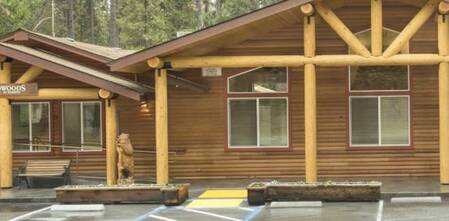
Redwoods In Yosemite Laundry Facility Open to Residents
For Wawona residents needing to do laundry, the Redwoods in Yosemite laundry facility is open and available from 8 a.m. to 4 p.m. daily.
For Wawona residents needing to do laundry, the Redwoods in Yosemite laundry facility is open and available from 8 a.m. to 4 p.m. daily.
Notes From Today's (1/23) Community Center Meeting
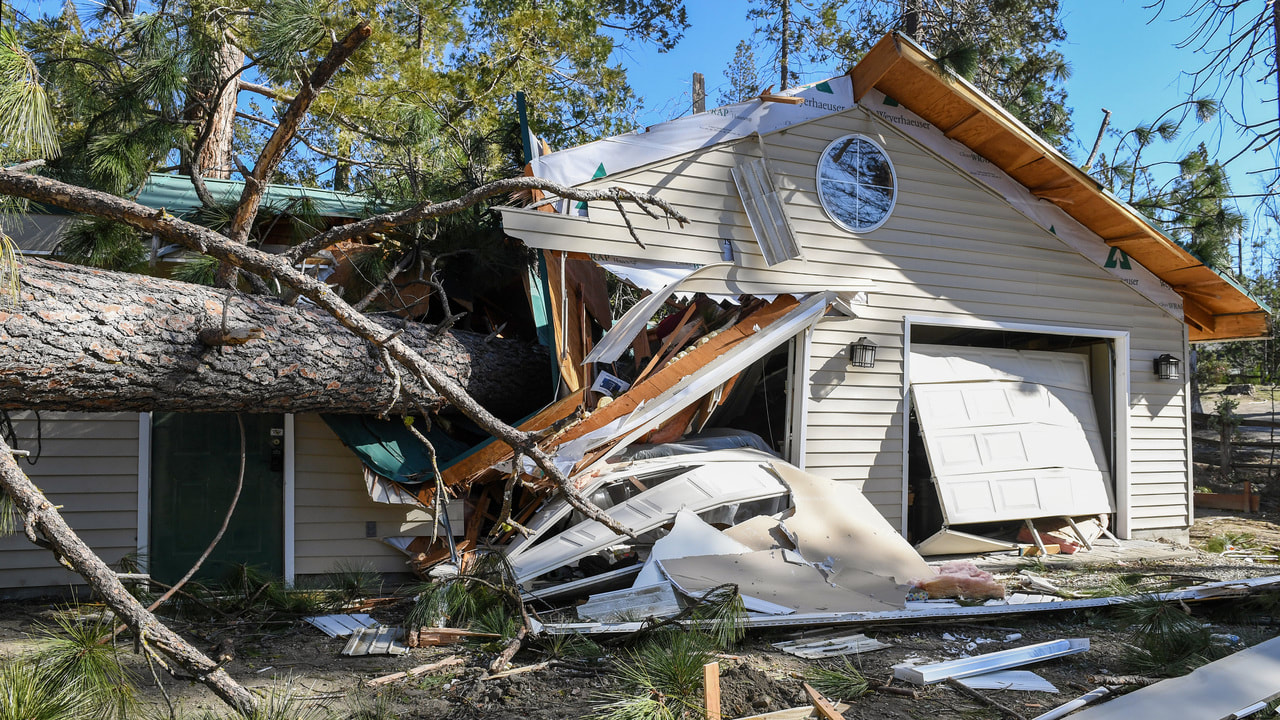
‘Total war zone.’ Yosemite area hit hard by wind that toppled trees. What happens now?
Fresno Bee
Lindsay Stevenson was in a camper van in the Yosemite National Park community of Wawona earlier this week when strong winds toppled hundreds of trees, snapping trunks in half and ripping roots out of the ground.
She said her husband, a U.S. Army veteran, described the wind event as “100 times worse” than the Afghanistan War.
When the sun rose Tuesday morning, a “total war zone” was revealed following a terrifying night of non-stop crashing sounds.
Powerful winds here, known as Mono winds, aren’t unfamiliar to those living in the Yosemite area. But this time, wind speeds reached higher-than-normal levels – in some places, over 100 mph – and resulted in unprecedented, widespread devastation. Hundreds of trees in the Sierra Nevada were toppled Monday night into early Tuesday, and dozens of homes and vehicles were crushed in rural mountain towns.
Fresno Bee
Lindsay Stevenson was in a camper van in the Yosemite National Park community of Wawona earlier this week when strong winds toppled hundreds of trees, snapping trunks in half and ripping roots out of the ground.
She said her husband, a U.S. Army veteran, described the wind event as “100 times worse” than the Afghanistan War.
When the sun rose Tuesday morning, a “total war zone” was revealed following a terrifying night of non-stop crashing sounds.
Powerful winds here, known as Mono winds, aren’t unfamiliar to those living in the Yosemite area. But this time, wind speeds reached higher-than-normal levels – in some places, over 100 mph – and resulted in unprecedented, widespread devastation. Hundreds of trees in the Sierra Nevada were toppled Monday night into early Tuesday, and dozens of homes and vehicles were crushed in rural mountain towns.
